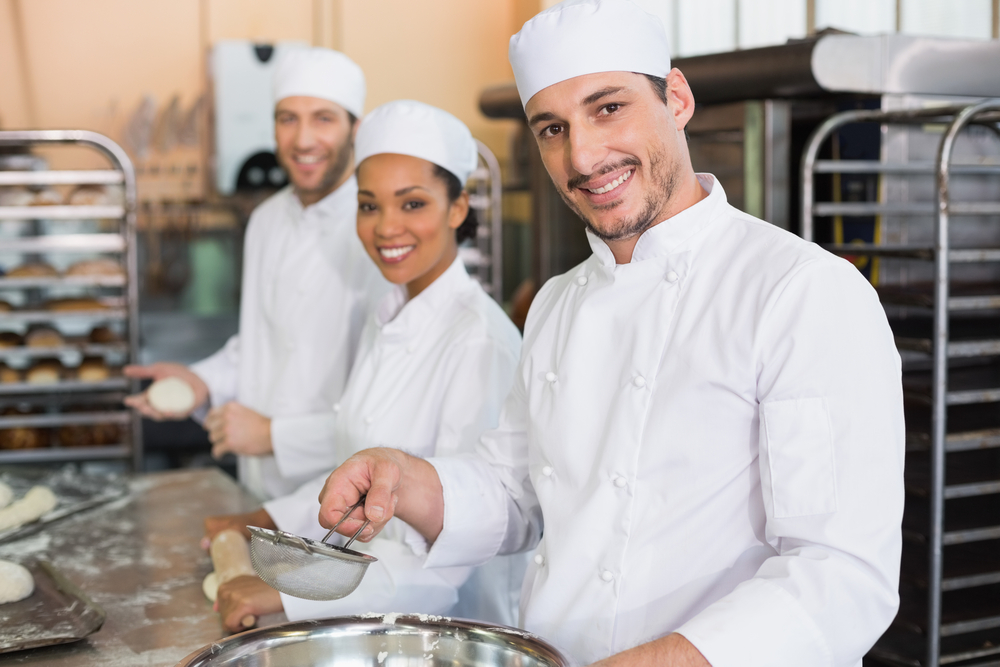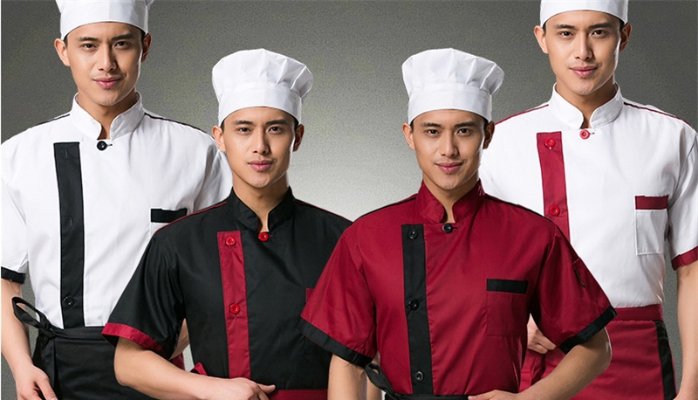Kitchen uniforms are specialized clothing worn by individuals working in kitchens, especially in restaurants, hotels, and other food service establishments. These uniforms serve various purposes, including hygiene, safety, and a professional appearance. Here are common elements of kitchen uniforms:
Chef’s Jacket: The chef’s jacket is a prominent component of kitchen uniforms. It is typically double-breasted with long sleeves to provide protection from heat and spills. The double-breasted design allows chefs to hide stains by reversing the jacket if necessary.
Chef’s Pants: These are usually loose-fitting and comfortable pants made from durable and breathable fabrics. They offer ease of movement in a fast-paced kitchen environment.
Apron: Kitchen staff often wear aprons to protect their clothing from spills and stains. Aprons can be made of various materials, such as cotton or polyester, and come in different lengths and styles.
Chef’s Hat (Toque): The tall, pleated chef’s hat is a traditional symbol of the chef’s status and expertise in the kitchen. The height of the hat is said to represent the chef’s level of experience.
Footwear: Slip-resistant and comfortable shoes are essential in a kitchen where spills and slippery surfaces are common. Closed-toe shoes are preferred to provide additional protection.
Gloves: In some kitchens, particularly those adhering to strict hygiene standards, chefs and kitchen staff may be required to wear disposable gloves to prevent contamination.
Neckerchief or Bandana: Some kitchen staff wear a neckerchief or bandana for both practical and aesthetic reasons. It helps absorb sweat and keeps hair away from the face.
Name Tag: A name tag may be worn for identification purposes, especially in larger kitchens or establishments with multiple staff members.
Color Coding: In some kitchens, different roles may be assigned different colors of uniforms to quickly identify staff members. For example, chefs may wear white, while kitchen assistants or support staff wear a different color.
It’s important to note that the specific uniform requirements may vary depending on the type of kitchen, the establishment’s policies, and local health and safety regulations. Uniforms not only contribute to a clean and professional appearance but also play a crucial role in maintaining hygiene standards in the kitchen.

Kitchen uniforms play a crucial role in maintaining hygiene, safety, and a professional appearance in a culinary environment. These uniforms are designed to meet the specific needs of chefs, cooks, and kitchen staff. Here are some common elements of kitchen uniforms:
Chef’s Jacket:Double-breasted design: Allows chefs to hide stains by reversing the jacket.

A traditional chef’s uniform is designed not only for the comfort and safety of the chef but also to convey a professional and clean appearance. The typical components of a chef’s uniform include:
Chef’s Jacket:Double-breasted design: The double-breasted style allows the chef to hide stains by reversing the jacket if needed.

Cotton is a popular material for chef uniforms due to its comfort, breathability, and durability. Here are some aspects of a cotton chef uniform:
Chef’s Jacket: Cotton chef jackets are commonly used in kitchens. They are lightweight, breathable, and absorbent, making them comfortable for chefs working in hot and fast-paced environments. Cotton jackets are also easy to clean and maintain.
Copyright ©️ 2023. All Rights Reserved | Design and Marketing by prontosys.ae